Top 10 Lithuanian festivals
You have still not decided when to come to Lithuania, or maybe you have a whole year there? Lithuanian festivals are some of the best ways to experience the country. And most of them may not only be watched, but also experienced by a foreigner.
1.Participate in a Song Festival, a UNESCO-recognized quadrennial mass event where ~30 000 professional and amateur singers from all over Lithuania and diaspora communities come to Vilnius to sing Lithuanian songs together. The sheer number of singers create an unparalleled grand feeling of unity, especially during the final "Day of the Songs" when everybody marches to the grandstand of Vingis park and sing pre-set songs. These days, all the song texts and notes are available online, so you may easily join the Song Festival even without speaking Lithuanian!
2.Take a walk in a large historic cemetery during Vėlinės (November 1st). That day, Lithuanians all over the country go to visit the graves of their forefathers, friends, and other people they admire. Customarily, the respect and remembrance are shown by leaving a burning candle near the gravestone. As such, the main cemeteries are eerily glowing during the night of Vėlinės when, Lithuanians believe, souls come back to the Earth. Especially shining are the graves of the most important Lithuanians, hence the main pantheons such as Rasos (Vilnius) or Petrašiūnai (Kaunas) are the best ones to spend Vėlinės at. In order to leave no dead unremembered, it is common to light additional candles on the uncared and forgotten graves. You may do that yourself!
3.Spend the short night of Joninės/Rasos (June 23rd) the traditional way in Kernavė. The whimsical location among the Medieval hillforts becomes even more spectacular as the folk melodies and Pagan prayers resound and the bonfires are lit during the sunset. People crown themselves with makeshift wreaths and later flow them along the river. While Joninės/Rasos is often a mixture of pagan and Christian practices, in Kernavė the original pagan celebration is recreated. You will have time to create your own wreath, if you wish!
4.Enjoy Klaipėda during the Sea Festival weekend. This Lithuania's favorite city festival is held in Klaipėda since 1934, attracting hundreds of thousands of Lithuanians from all over the country. Initially intended to promote Lithuania as a naval country, it has a plethora of concerts, parades, fireworks and other events located near the shore, as well as sea-related ceremonies and regattas.
5.Watch the New Year fireworks from a high location in a large Lithuanian city (especially Vilnius), preferably having a 360 degrees view or at least a view towards the downtown. The New Year fireworks in Lithuania are not some municipal well-choreographed event; they are everybody's mission. Throughout December, Lithuanians shop at temporary kiosks for whatever makes sound and light. All these stockpiles are then fired around midnight December 31st/January 1st (a special law waives the need for permits). The sheer amount of colorful lights, explosion sounds and then smoke that covers entire Lithuanian urban skylines is spectacular. You may even fire a firework yourself, if you want!
6.Shop in the traditional Kaziukas fair of Vilnius. Lithuania's oldest and largest fair fills the Vilnius downtown with traders (selling traditional candies, artwork, crafts and other things) and tons of visitors. It is likely the best opportunity to buy something traditionally Lithuanian, even though there at least as many Chinese goods stalls as there are those of Lithuanian arts and crafts these days. The beginnings of Kaziukas fair likely lie in 1636 when the remains of Lithuania's patron saint Casimir were brought to be interred in Vilnius Cathedral.
7.Celebrate Užgavėnės in the open-air Museum of Folk Customs at Rumšiškės. This carnival famous for its traditional hand-made papier-mache masks, representing various ethnicities, social classes, and animals. A pagan-inspired burning of the effigy of winter (Morė) and the triumph of vegetarian Kanapinis (Weed-man) over Lašininis (Fat-man) - marking the beginning of the Lent - are other peculiar traditions. While all these take place in many locations, they are the most concentrated and interesting to see in Rumšiškės, which is a massive recreation of 19th century Lithuanian villages. In there, entire day is dedicated to Užgavėnės and the festival conveniently "moved" to a weekend to attract the most visitors. Bring your own mask, if you want (it doesn't have to be traditional)!
8.Befriend a Lithuanian family enough to be invited to celebrate Kūčios (December 24th evening) together. While this is far from easy as only the closest people are typically invited, it gives a rewarding insight into the Lithuanian family culture. It is the most important - and the most meaningful - dinner of the year, both an anticipation of Christmas and a get-together of a larger family. With at least 12 vegetarian meals, it is also usually very tasty as whoever prepares it does their best. You may help by making your own meal as well, as long as it has no meat! Kūčios meal is followed by a solemn church mass which may be joined by anybody. However, while any public forms of Kūčios or even Christmas were banned during the Soviet occupation, the private family Kūčios dinners continued unbroken.
9.Join one of the grassroots independence day parades (February 16th in Kaunas, March 11th in Vilnius) by marching together with the Lithuanian patriots surrounded by a spirit that has allowed the small nation to withstand the Teutonic invasions, Polonization, Russification and the 20th century genocides. Just don't be one of those who misunderstand the "Lietuva lietuviams" (Lithuania for the Lithuanians) chant - it merely promotes the idea that the people of Lithuania should be the ones who decide the fate of their country (which is the idea why Lithuanians were never content with any foreign rule). Foreigners are welcome to attend the parades and commonly bring their own flags or posters in their own languages to show a foreign support for a free Lithuania - which you may do as well. Note that in addition to the grassroots parades, there may be official parades which tend to be more somber experiences.
10.Take a walk through Vilnius downtown during the Street music day. In this new tradition created by Lithuanians (but gaining acceptance elsewhere as well), all the musicians are encouraged to perform for free in the streets. This is legal for anybody - not solely musicians. Walking from intersection to intersection, you may listen to various musical styles or, perhaps, even decide to give a performance yourself!
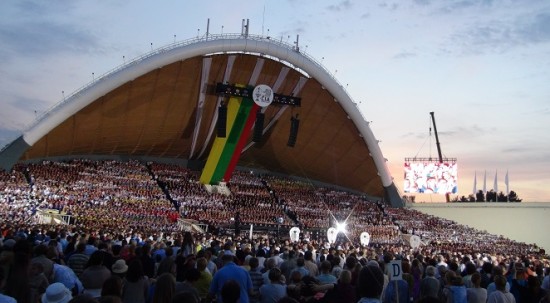
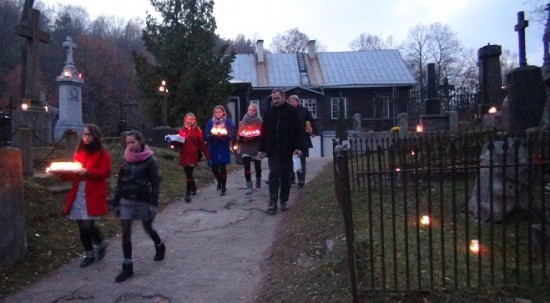
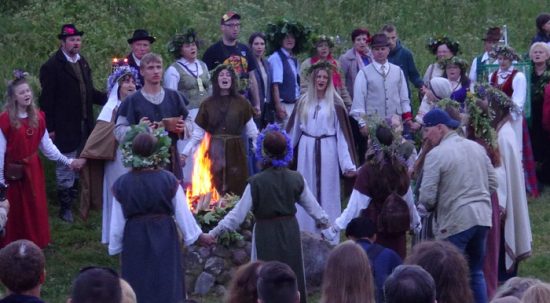

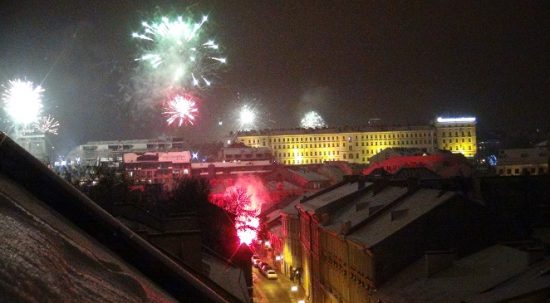
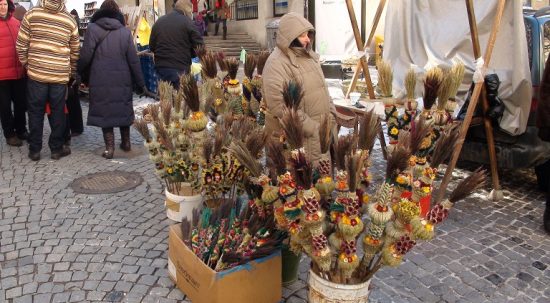
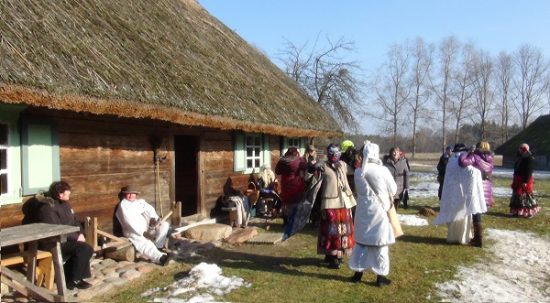
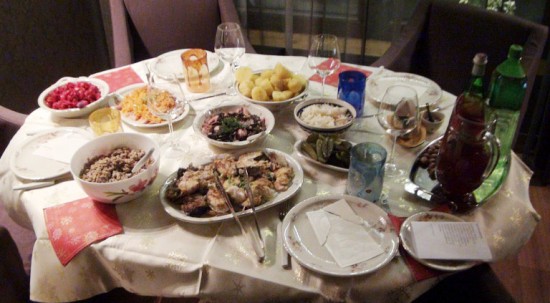
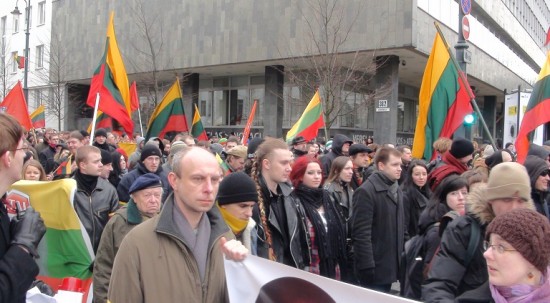
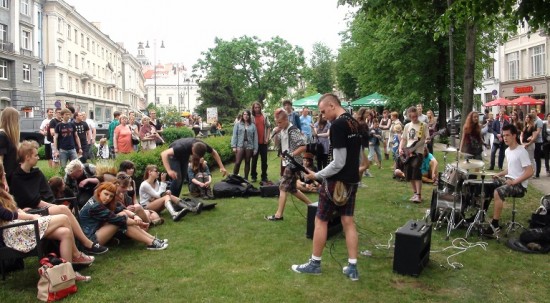



June 1st, 2020 - 12:08
Kūčios ir Kalėdos
June 1st, 2020 - 14:56
I like Užgavėnes, because I like masks. And pancakes.